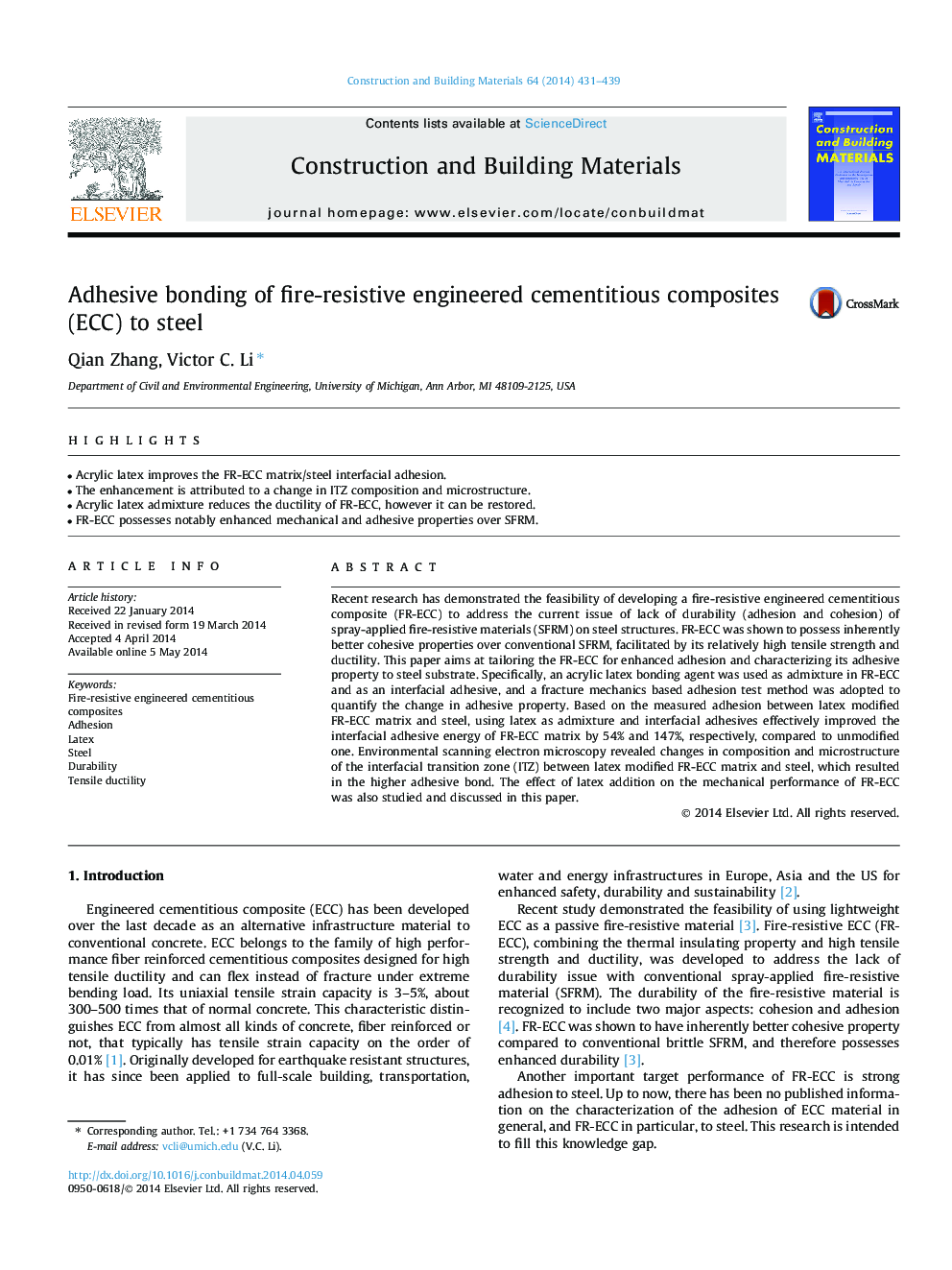| Article ID | Journal | Published Year | Pages | File Type |
|---|---|---|---|---|
| 257618 | Construction and Building Materials | 2014 | 9 Pages |
•Acrylic latex improves the FR-ECC matrix/steel interfacial adhesion.•The enhancement is attributed to a change in ITZ composition and microstructure.•Acrylic latex admixture reduces the ductility of FR-ECC, however it can be restored.•FR-ECC possesses notably enhanced mechanical and adhesive properties over SFRM.
Recent research has demonstrated the feasibility of developing a fire-resistive engineered cementitious composite (FR-ECC) to address the current issue of lack of durability (adhesion and cohesion) of spray-applied fire-resistive materials (SFRM) on steel structures. FR-ECC was shown to possess inherently better cohesive properties over conventional SFRM, facilitated by its relatively high tensile strength and ductility. This paper aims at tailoring the FR-ECC for enhanced adhesion and characterizing its adhesive property to steel substrate. Specifically, an acrylic latex bonding agent was used as admixture in FR-ECC and as an interfacial adhesive, and a fracture mechanics based adhesion test method was adopted to quantify the change in adhesive property. Based on the measured adhesion between latex modified FR-ECC matrix and steel, using latex as admixture and interfacial adhesives effectively improved the interfacial adhesive energy of FR-ECC matrix by 54% and 147%, respectively, compared to unmodified one. Environmental scanning electron microscopy revealed changes in composition and microstructure of the interfacial transition zone (ITZ) between latex modified FR-ECC matrix and steel, which resulted in the higher adhesive bond. The effect of latex addition on the mechanical performance of FR-ECC was also studied and discussed in this paper.
